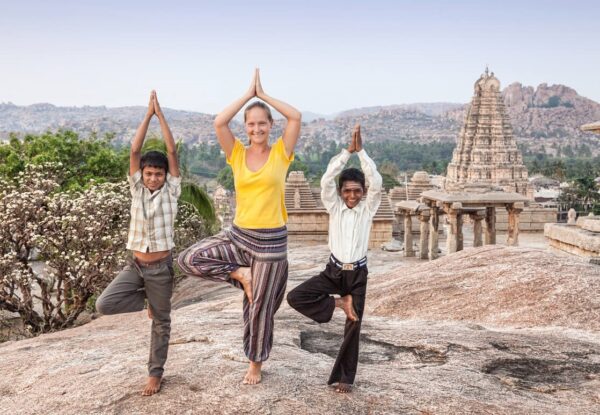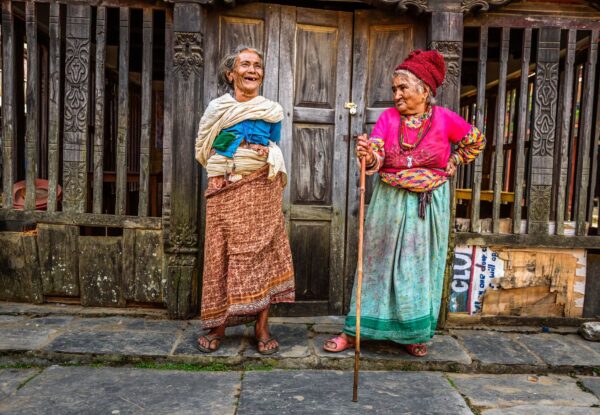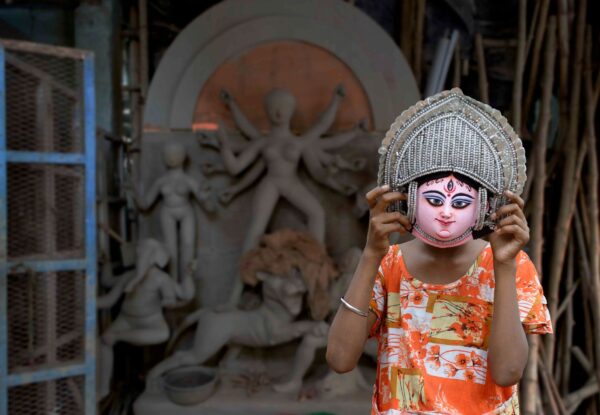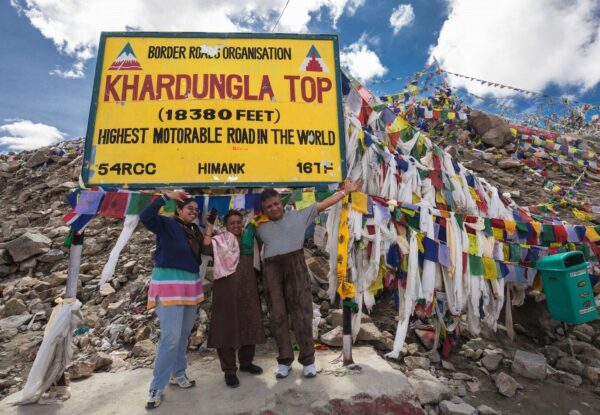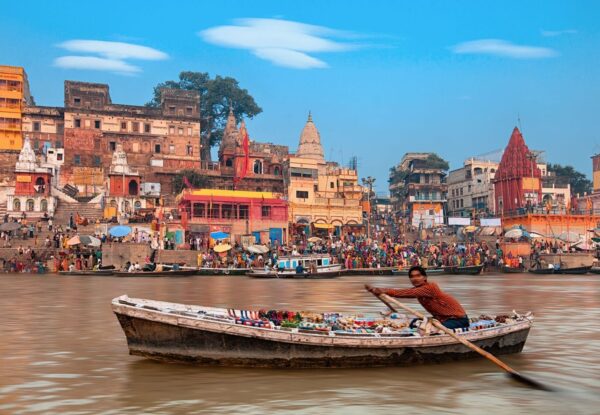Highlights of Everest Base Camp Trek
Trip Details
Walk along the famous trail to the Everest Base Camp and Ascend Kala Pattar
The base camp at at the foot of the earth’s highest mountain is undoubtedly one of the most acclaimed. Mount Everest soars 29,030 ft./8848 m high up into the heavens and following the trail to its base camp is the experience of a lifetime. While hiking past the small villages and cultivated lands of Sherpa country our bodies get the chance to acclimatize to the height. This is essential because we soon reach high altitudes with stunning views of Everest, Ama Dablam and other peaks in the Himalayan Mountain Range from the impressive Thyangboche Monastery. There is also the wonderful opportunity to ascend Kala Pattar at 18,192 ft./5545 m for even more amazing panoramas.
Highlights
- Trek where many famous climbers have left their footprints on the way to the Everest Base Camp
- Get to know more of the Sherpa culture and visit Namche Bazaar
- Follow the trail in sight of the greatest mountain on earth and enjoy the breath-taking views of Nuptse, Ama Dablam, Lhotse and of course Everest
- Admire the hilltop Buddhist monastery of Thyangboche
- Climb Kala Patter to see Everest from up close
- Make new friends and share experiences with fellow trekkers in cozy teahouses
- Bask in the famous Nepalese hospitality of the mountain lodges
Book this Trek for Your Exclusive Group
Make up a private group of minimum 4 people and select the date that suits you. For more information, send an email to info@vacationindia.com
Key Info
▪ Stay in standard hotels for 3 nights, and in lodges for 12 nights
▪ Trekking from one point to the next for 12 days, full portage included
▪ Group size usually between 4 and 16, with tour guide assisted by local staff. Minimum age of participants 16 years
▪ Average altitude 12,795 ft./3900 m, maximum altitude 18,192 ft./5545 m
▪ Transportation: Two domestic flights and in a private minibus
▪ 5 to 8 hours trekking per day, but some days may be longer
▪ First aid supplies and oxygen carried by staff throughout the trek

India your way, your route, your style
• Price based on two persons in a double room
• Prices are in USD Excluding international flights
• Do you prefer to travel alone or would you like to come to India with a group of friends? We will be happy to tailor-made your tour program that meets all your wishes and needs
| Travel Period | PRICE PER PERSON | |
|---|---|---|
| Apr 1, 2024 – Mar 31, 2025 | Price on Request (Deluxe) | INQUIRE NOW |
| Apr 1, 2024– Mar 31, 2025 | Price on Request (Luxury) | INQUIRE NOW |
Would you like to have the trip tailored to your wishes?
Our itineraries are only examples and suggestions and can be customized individually. For example, a trip can be shortened or extended with additional destinations or monuments, the hotels can be a mix of 4 and 5 star etc. Let us know your personal wishes so that we can adapt the trip to your wishes. Connect with our travel expert for a 1:1 consultation and receive your obligation free travel proposal. Together with the travel request we will send you the hotel list so that you can get a picture of the hotels selected on the internet. We promise ✔Competent and Friendly Guides ✔Expert Drivers ✔Best Hotels ✔24/7 Support. Read more on Why Vacation India?
Get in Touch: info@vacationindia.com / +91-99274-65808 (India Calling & Whatsapp) / USA/Canada: 1 (888) 414-6804
Included in the Cost of the Classic Nepal Trip
- All breakfasts
- Morning tea in bed while on trek
- Welcoming drink upon arrival at every overnight stay
- 12 nights in tea houses and 3 nights in standard hotels
- All activities on the itinerary and all transport
- Accompanying tour leader at all times, as well as local staff. On trek the client to staff ratio is 4:1
- Transfers at arrival and departure
- Full portage during the trek
- Map of the trek will be provided locally
- National parks fees and trekking permits
Services not included
- Travel insurance
- Vaccinations and visas
- Sleeping bags. They can be rented in advance at around $59*
- Warm down jacket. Rent in advance at around $59*
- International Flights
Vaccinations for Nepal
Nepal do not require any specific vaccinations, but we recommend the following: Tetanus, Polio, Diphtheria, Hepatitis A and Typhoid.
Malaria is not prevalent in Nepal, so unless you fall into a high risk health group anti-malaria tablets will not be a necessity. However, it is a good idea to speak to your health clinic or GP for the best advice. Malaria risk is mostly encountered in the lower south terai areas bordering India.
Yellow fever certificates are required only if you travel from any country where there is a danger of transmission of yellow fever or if you have spent 12 hours or more in such a country.
The majority of our Nepal tours visit high altitudes which implies the possibility of suffering from Acute Mountain Sickness. We always plan our itineraries to provide ample opportunity for acclimatization to high altitudes. However, the risk of suffering from AMS is always present, so consult the ‘Altitude Warning’ found in ‘Trip Notes’ below for more information and advice.
Eating and Drinking
All breakfasts are included during the trek.
The tea house breakfasts consist of bread (choice of chapatti, toast, or local Tibetan bread), egg (fried, omelet or boiled), and either porridge or muesli. Hot coffee or tea is served with breakfast. On some days no choices will be available. On these days you will receive either a so-called trekkers’ breakfast, consisting of toast, baked beans, hash browns and egg, or pancakes with honey or jam. Not all tea houses have options available, so only when we are absolutely sure will we offer you a choice.
We will have our lunch at lodges on the way. To save time, a guide will sometimes walk ahead with everyone’s orders. Dinners will be taken in our overnight tea houses.
Menus at the different lodges are mostly identical, but are fairly extensive with a large selection including the traditional Nepalese dish of Nepalese dhal bhat, and even pizza with apple pie for desert. Dhal bhat, Nepal’s staple diet, also comes in a variety of forms. However, it usually is a curry lentil dish with vegetables or meat, rice and pickles or chutney. Momos is a very popular snack. It is the Nepalese version of dumplings, either steamed or fried with a filling of vegetables or meat.
Meat is readily available, but we strongly advise against consuming any meat while on trek as it has usually been transported over a period of days without refrigeration, from the lower altitudes to reach the tea houses. Consuming meat not properly kept at the right temperature may result in illness or upset stomachs. Dirty money is a source of germs, so make use of hand sanitizer regularly.
If you are gluten intolerant, we advise you to bring extra snacks and food as the variety available on trek will not suffice. This is especially true for breakfast when your only choice will be between an egg, vegetable fried rice and sometimes the trekkers’ breakfast with an additional egg to replace the bread. Note that even the soups contain gluten and are not fresh but made from soup powder. For vegans the daily breakfast will consist of porridge or muesli with water, with on some days an eggless trekkers’ breakfast or vegetable fried rice. For lactose intolerant trekkers the vegan breakfast applies with an egg of your choice.
Be aware that buying imported drinks or food on trek will imply higher costs than the amount we suggest.
The importance of water
It is important to stay hydrated while being physically active but even more so at higher altitudes, so we recommend a daily consumption of 3 to 4 liters or more.
Please refrain from purchasing bottled water while on trek. Plastic pollution is a growing concern in Nepal. Rather buy hot, boiled water at the tea houses. It costs around Rs 150 to 300 a liter and is perfectly safe without have to be treated. Naturally the higher we are the more the cost. At bedtime it can also serve as a hot water bottle.
If requested, tea houses will hand out cold water for free. This water need to be treated before drinking, so be sure to carry suitable water treatment supplies and your own reusable water bottle. Consult an outdoor retailer, as there are much better products available lately than the old fashioned purification tablets. Make sure the product you buy will be as effective in cold or freezing temperatures and also take into account battery life – in general lithium batteries perform better than traditional ones in freezing cold conditions.
A handheld UV water filter can effectively treat a liter of liquid in just a few minutes and it is immediately drinkable. Best are the lightweight models that use lithium batteries. Also be aware that you need a bottle with a wide mouth to use with this device.
There are many water purifying and filter bottles available these days, but be careful not to buy a weighty bottle which holds only a small amount of water. Always check the product’s performance under freezing conditions.
Weather Conditions
The Nepal trekking season is mainly between October and mid-May. Day temperatures are usually comfortable for trekking at most altitudes during this time. Another advantage is frequent clear skies with only occasional snow and rainfall. In the Kathmandu Valley you can expect day temperatures ranging between 59˚F/15˚C and 95˚F/35˚C, and around 50˚F/50˚C at altitude 11,811 ft./3600 m. The higher the trail takes us; the lower temperatures will drop. Every trekking season has its advantages.
Autumn/Post Monsoon: Mid-September – November. This is high season for trekking in Nepal, and daytime temperatures in the Kathmandu Valley are usually above 68˚F/20˚C. Clear skies mean sunny weather with good mountain views. At night the temperature at high altitudes can drop to 14˚F/-10˚C.
Winter: December – the end of February. Although conditions are cooler, this is the best time to embark on a Nepal trek. Especially during December, the skies are invariably clear, making for excellent mountain views. Nights can be as cold as 5˚F/-15˚C, and even drop to -4˚F/-20˚C higher up the mountain. However, the days are still sunny and pleasant. In addition, there are not as many trekkers during this time. Day temperatures in Kathmandu can be as high as 66˚F/19˚C.
Spring/Pre-Monsoon: From March to May. Temperatures are higher during the days and nights, but an afternoon haze usually develops. The lowlands can be very hot while Kathmandu temperatures can go up to 95˚F/35˚C. It is springtime, so flowers are in bloom, a reason why many trekkers decided on a spring trek.
Snowfall is possible whichever time of the year you choose to go on trek, especially higher up.
Weather conditions in mountainous areas are rarely predictable, so be equipped and prepared, and bring everything you need to handle adverse weather conditions.
Altitude Warning
During this trek you will spend at least one night higher than 11,483 ft./3500 m and there is a definite risk of getting Acute Mountain Sickness or AMS. This condition, if not treated may become life threatening. Most trekker are affected to a milder degree and may experience symptoms like sleeplessness, shortness of breath and headaches during the day or night. All out trek leaders are fully trained and will be able to identify severe AMS symptoms. If necessary, we will immediately make arrangements to take a client down rapidly to lower altitudes.
Is This the Trip for You?
If your feel confident about your health and physical fitness, you will enjoy this challenging level five grade trek. It gives you the opportunity to trek to the famous Everest Base Camp and up Kala Pattar with splendid vistas of the world’s highest mountain up close.
The trip consists of 12 days’ walking from one point to the next, full portage included, so you will only carry a daypack. Previous experience of trekking is necessary, and so is regular mountain walking or exercise. Otherwise, it is essential to prepare yourself physically beforehand. There are around 7 suspension bridges to cross twice on the trail. Although they are all modern with mesh sides, some are quite high and long, so if you suffer from vertigo or a fear of heights, these crossings may be a challenge.
The average altitude of the trek is 12,795 ft./3900 m and the maximum 18,192 ft./5545 m. There are ample opportunities and time to acclimatize but altitude will always be a factor that should be taken into consideration.
There are one or even more domestic flights included in this trip and the Lukla return flight is on a Dornier of Twin Otter. We make use of private minibuses for transfers.
The duration of the daily walks indicated in the itinerary is only an approximation. The hours stated do not include lunch breaks and may vary according to the pace and fitness of the group.
Lodges and Hotels
During the trek, overnight stays will be in tea houses (lodges). These are quite adequate, although they offer only basic accommodation, so be realistic and do not expect luxury in such remote places.
In Kathmandu you will sleep in hotels for three nights. This hotel will be within easy walking distance from the popular Thamel district and will have 4 stars.
The dining rooms of the lodges is the place where everyone congregates. They sometimes have a heater or stove (sometimes a fee is charged for switching on the heater) and beautiful multi-colored traditional rugs. The majority of lodges have snacks and some basic items for sale, such as soap, toilet paper and tissues. There usually is electricity, although it may not always be reliable and provide bright light. We highly recommend you carry a flashlight for reading etc. Facilities to charge electrical appliances are in general only available in the dining areas and cost Rs150 to Rs350 an hour for every device. Solar power is used by many tea houses which means that there will not be adequate electrical power for charging. These days many tea houses have Wi-Fi, but may be temperamental and slow.
Accommodation on trek is in double rooms with two beds. The beds have mattresses, sheets and one pillow. The rooms are not heated, so a good sleeping bag is essential. These can be rented.
Toilet facilities are basic and usually limited to one or sometimes two per lodge. They are outside the lodge building and most of them are of the ‘squat’ Asian kind. However, some tea houses have installed western style toilets. You will have to carry your own toilet paper or purchase it locally. Toilet paper should always be thrown in the waste bin provided, not into the toilet bowl. In case there is no handle for flushing, use the water in the container. If the water is frozen or the container is empty, refill it or notify the lodge.
There are now lodges with hot ‘showers’, sometimes just a bucket filled with hot water, without a traditional shower head. The charge is around Rs250 to 500 for a shower.
Hygiene standards may vary, especially during peak climbing season and when water freezes during the winter months. Please talk to the lodge management or your trek leader to report problems and stay vigilant on matters of personal hygiene at all times: hand sanitizer or soap should be used before and after visits to the toilet, eating snacks or before meals.
Generally, the higher up the mountain the lodge is located, the costlier services and food will become. Tea houses at higher altitude are also more basic.
Clients on any of our treks in Nepal will be accompanied by one staff member per every four trekkers. Obviously when a staff member has to stay behind with to assist a client for some reason, this ratio will change. Trek leaders are further assisted by extra guides and a number of porters or cow-yak hybrids called dzos to transport the group’s luggage. Our clients only carry a day pack with what is needed for the day’s trek, the rest of the gear is transported by porters or dzos. These pack animals can carry four trekkers’ gear while porters can carry two, so kitbags should not weigh more than 22 lbs./10 kg each. We provide all porters who trek higher than 14,764 ft./4500 m with the necessary warm clothing such as a windproof pants and jackets, boots and socks, hats and sunglasses and gloves. We also insure all trekking staff at our local Nepal partner.
There are no reviews yet. Be the first one to write one.
To receive the list of Hotels selected for this tour, please email us at info@vacationindia.com
Keywords: Everest Base Camp Trek
Similar Tours You May Like
Best of Kashmir and Leh Ladakh
Fly from New Delhi to Srinagar (Kashmir) ➜ Gulmarg ➜ Pahalgam ➜ Sonamarg ➜ Kargil ➜ Mulbekh ➜ Lamayuru Monastery ➜ Likir ➜ Sangam Viewpoint (Confluence of Zanskar and Indus Rivers) ➜ Spituk ➜ Magnetic Hill ➜ Leh ➜ Khardung La ➜ Nubra Valley ➜ Diskit ➜ Hunder ➜ Turtuk ➜ Lake Pangong Tso ➜ Chang La ➜ Hemis ➜ Thiksey ➜ Leh ➜ Fly from Leh to New Delhi
Go Nepal: A 12-Day Nepal Experience
Kathmandu (Thamel Area, Leisure Time) ➜ Chitwan National Park ➜ Pokhara ➜ Tikhedhunga ➜ Ghorepani ➜ Tadapani ➜ Ghandruk ➜ Dhampus ➜ Pokhara ➜ Kathmandu
Classic Nepal Tour: Kathmandu, Bandipur, Chitwan, Pokhara
Kathmandu (Thamel Area) ➜ Swayambhunath ➜ Durbar Square Bazaar ➜ Hanuman Dhoka ➜ Patan ➜ Bhaktapur ➜ Pashupatinath and Boudhanath ➜ Bandipur ➜ Manakamana Temple ➜ Pokhara ➜ World Peace Pagoda ➜ Davis Falls ➜ Phewa Lake ➜ Chitwan National Park ➜Kathmandu
East India Sojourn – Kolkata, Darjeeling and Sikkim (13 days)
Kolkata ➜ Darjeeling ➜ Sikkim ➜ Pelling ➜ Kalimpong ➜ Kolkata
From Manali to Leh: Tour the Sights of Ladakh
New Delhi (Start), Amritsar (Punjab), Mcloead Ganj (Dharamshala), Manali, Keylong via Rohtang La Pass, Tso Kar, Leh, Hemis Monastery, Thiksey Monastery, Leh Palace, Shanti Stupa, Phyang Monastery, Alchi, Likir, Diskit Monastery, Nubra Valley, Pangong Tso via Shyok River, New Delhi (End)
Kashmir Leh Ladakh India Tour (13 Days)
New Delhi (Start), Srinagar (Kashmir), Dachigam National Park, Sonmarg, Lamayuru, Alchi, Likir, Thiksey Monastery, Leh Palace, Shanti Stupa, Phyang Monastery, Nimmu Village, Shang Valley, Hemis Monastery, Khardung La Pass, Nubra Valley, Lake Pangong, Tso Moriri, New Delhi (End)
On the Footsteps of Himalaya (Leh, Ladakh, Kashmir and Zanskar)
New Delhi (Start) ➜ Srinagar (Kashmir) ➜ Gulmarg ➜ Panikhar via Sonamarg ➜ Kargil ➜ Padum via Rangdum ➜ Kargil ➜ Lamayuru ➜ Wanla ➜ Photoksar ➜ Lingshed ➜ Alchi ➜ Likir ➜ Leh ➜ Hemis ➜ Thiksey ➜ Lake Pangong ➜ New Delhi (End)
LEH LADAKH SUMMER FESTIVAL 2023 TOUR – 12 Days
New Delhi (Start), Leh-Ladakh, Alchi & Likir Monastery, Nubra Valley, Khardung La Pass, Tso Moriri, Tso Kar, Leh, New Delhi (End).
Best of Kathmandu and Bhutan including Bhutan Festivals
Kathmandu (Pashupatinath Temple, Boudhanath Stupa and Durbar Square) – Flight to Paro (Bhutan) – Thimphu – Punakha – Paro – Tiger’s Nest – Paro Festival – Flight to Kathmandu – Chitwan National Park – Kathmandu
Go Nepal: A 12-Day Nepal Experience
Kathmandu (Thamel Area, Leisure Time) ➜ Chitwan National Park ➜ Pokhara ➜ Tikhedhunga ➜ Ghorepani ➜ Tadapani ➜ Ghandruk ➜ Dhampus ➜ Pokhara ➜ Kathmandu
Classic Nepal Tour: Kathmandu, Bandipur, Chitwan, Pokhara
Kathmandu (Thamel Area) ➜ Swayambhunath ➜ Durbar Square Bazaar ➜ Hanuman Dhoka ➜ Patan ➜ Bhaktapur ➜ Pashupatinath and Boudhanath ➜ Bandipur ➜ Manakamana Temple ➜ Pokhara ➜ World Peace Pagoda ➜ Davis Falls ➜ Phewa Lake ➜ Chitwan National Park ➜Kathmandu
Golden Triangle + Varanasi (Ganges) + Nepal
New Delhi ➜ Agra ➜ Abhaneri Stepwell ➜ Ghost City Fatehpur Sikri ➜ Jaipur ➜ Varanasi (Ganges & Sarnath) ➜ Kathmandu ➜ Pokhara ➜ Kathmandu (Swayambhunath, Pashupatinath & Boudhanath)
Rajasthan And Nepal – The Epic Adventure Of India And Nepal
New Delhi ➜ Mandawa ➜ Khimsar (Heritage Fort Hotel) ➜ Jodhpur ➜ Ranakpur ➜ Udaipur ➜ Chittorgarh Citadel ➜ Bundi ➜ Jaipur ➜ Abhaneri Stepwell ➜ Fatehpur Sikri ➜ Agra (Taj Mahal & Red Fort) ➜ Khajuraho ➜ Orchha ➜ Varanasi (Ganges & Sarnath) ➜ Lumbini (Nepal) ➜ Pokhara ➜ Chitwan National Park ➜ Kathmandu
India to Nepal Tour
New Delhi ➜ Jaipur ➜ Ranthambore National Park ➜ Abhaneri Stepwell ➜ Ghost City Fatehpur Sikri ➜ Agra (Taj Mahal & Red Fort) ➜ Khajuraho ➜ Orchha ➜ Varanasi (Ganges & Sarnath) ➜ Lumbini (Nepal) ➜ Chitwan National Park ➜ Pokhara ➜ Kathmandu



